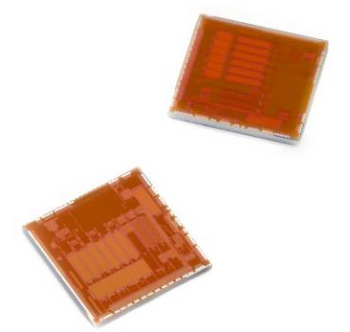Imec demonstrated a low-power (20µW), intra-cardiac signal processing chip for the detection of ventricular fibrillation at this week’s International Solid State Circuits Conference (ISSCC 2013) in San Francisco with Olympus. An important step toward next-generation Cardiac Resynchronization Therapy solutions, the new chip delivers innovative signal processing functionalities and consumes only 20µW when all channels are active, enabling the miniaturization of implantable devices.
 Imecfs Low-Power Chip for Intra-Cardiac Ventricular Fibrillation Detection
Imecfs Low-Power Chip for Intra-Cardiac Ventricular Fibrillation Detection
Robust and accurate Heart Rate (HR) monitoring of the right and left ventricles and right atrium is essential for implantable devices for Cardiac Resynchronization Therapy. And accurate motion sensor and thoracic impedance measurements to analyze intra-thoracic fluid are critical for improving clinical research and analysis of the intra-cardiac rhythm. Moreover, extreme low-power consumption is required to further reduce the size of cardiac implants and improve the patient’s quality of life.
Imec’s low-power integrated circuit features three power-efficient, intra-cardiac signal readout channels (or in short: ECG channels). Each of the three ECG channels is equipped with a precision ECG signal readout circuit with very low-power consumption and an analog signal processor to extract the features of the ECG signal for detection of ventricular fibrillation. The feature extractor achieves only 2ms latency to facilitate responsive Cardiac Resynchronization Therapy.
Additionally, the chip includes unique features that improve the functionality of Cardiac Resynchronization Therapy devices. First, the low-power accelerometer readout channel enables rate adaptive pacing. Secondly, to handle intra-thoracic fluid analysis, the chip includes a 16-level digital sinusoidal current generator and provides 82db wide dynamic range bio-impedance measurement, in the range of 0.1Ω—4.4kΩ with 35mΩ resolution, and achieves best-in-class accuracy (>97%).